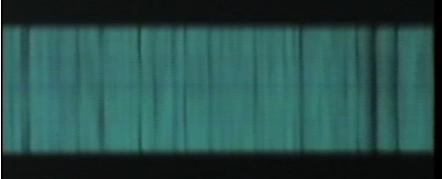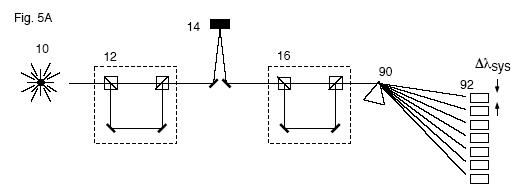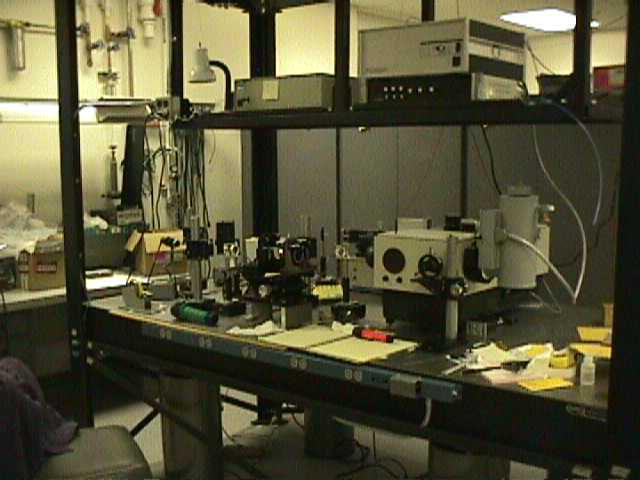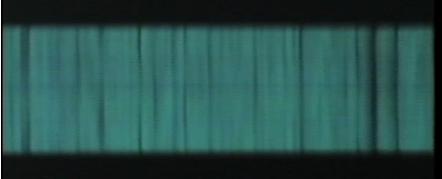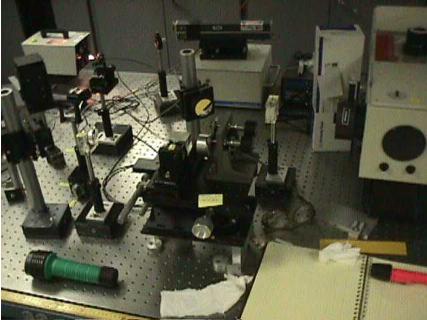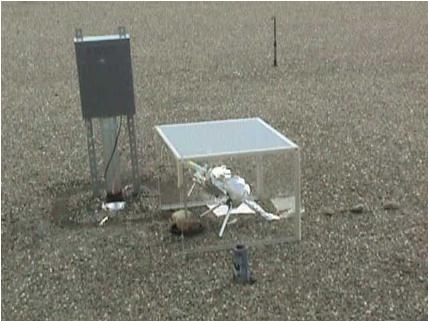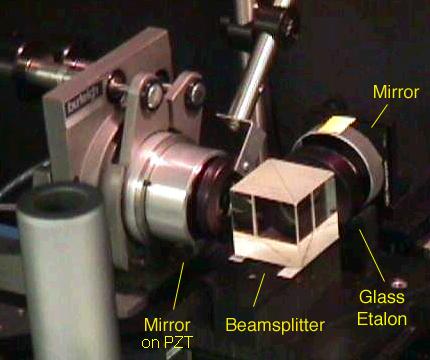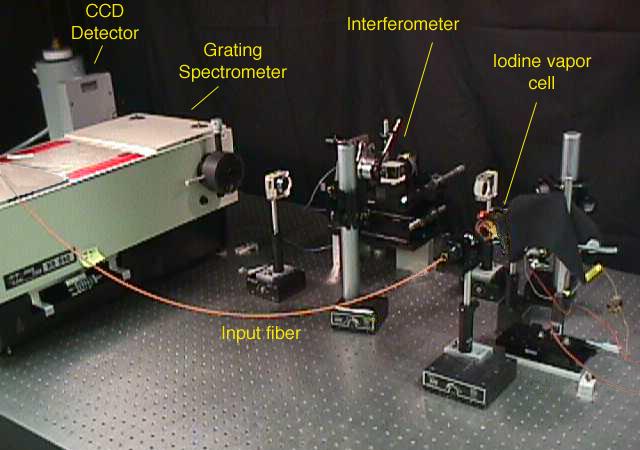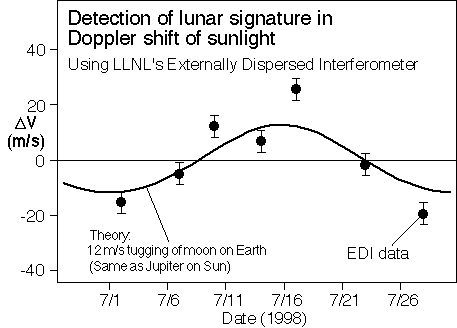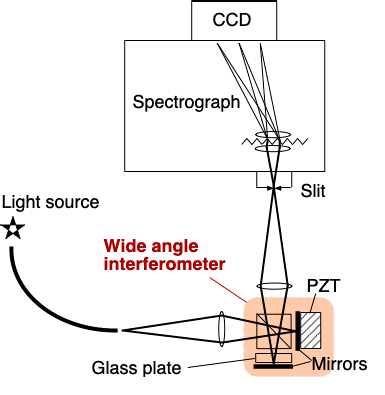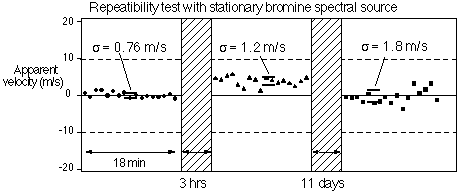Early History of Externally Dispersed Interferometry |
||
Fig. H0. The earliest fringing spectra of sunlight through an iodine reference cell were recorded by David Erskine at LLNL. Above is a frame from a video made April 8, 1998 looking at the spectrograph output, after sunlight collected from a rooftop fiber sends light through the iodine cell, then the interferometer, and then into the spectrograph. Phase varies transversly, and wavelength varies horizontally. |
||
EDI was invented by Erskine in 1997 as a natural outgrowth of his Since 1987 David Erskine at Lawrence Livermore Nat Lab has measured Doppler velocities interferometrically on laser-illuminated targets in shock physics experiments. Phase stepped data analysis to achieve high fringe shift precision, as well as the use of wide-angle interferometers, was standard for this technique which had been in use since the 1970s. |
||
 |
|
||||
Two interferometers in series with a disperser |
||
 |
||||
|
||||
Invention of EDI |
||
 |
||||||||
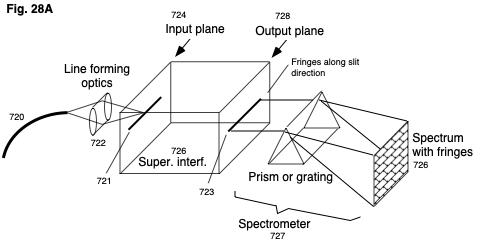 |
||||||||
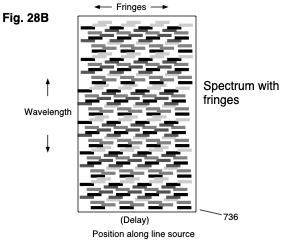 |
||||||||
Figure H2b. Schematic of EDI concept in Jan 1997, from Fig. 28 of US patent 6,115,121 "Single and Double Superimposing Interferometer Systems". |
||||||||
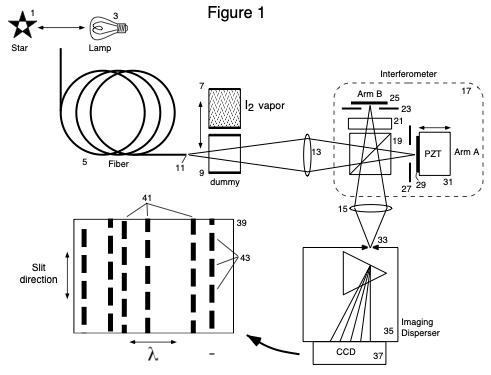 |
||||||
 |
||||||
Figure H2c. Schematic of EDI apparatus, from US patent 6,351,307 "Combined Dispersive/Interference Spectroscopy for Producing a Vector Spectrum". |
||||||
The first EDI built and demonstrated in spring of 1998 on sunlight |
||
|
|||||
|
|||||
|
|||||
|
|||||
|
|||
Doppler detection of lunar pull July 1998 |
||
|
||||||||
|
||||||||
|
||||||||
*This work was funded by the LDRD program (Laboratory Directed Research and Development), project 98-ER-054, at Lawrence Livermore Nat. Lab. from Oct 97 to Apr 2000. The author is grateful to Ed Moses, Charles Alcock, John Holzrichter and Rokaya Al-Ayat for their early strategic support of this project. |
||
www.SpectralFringe.org site maintained by |
||||
